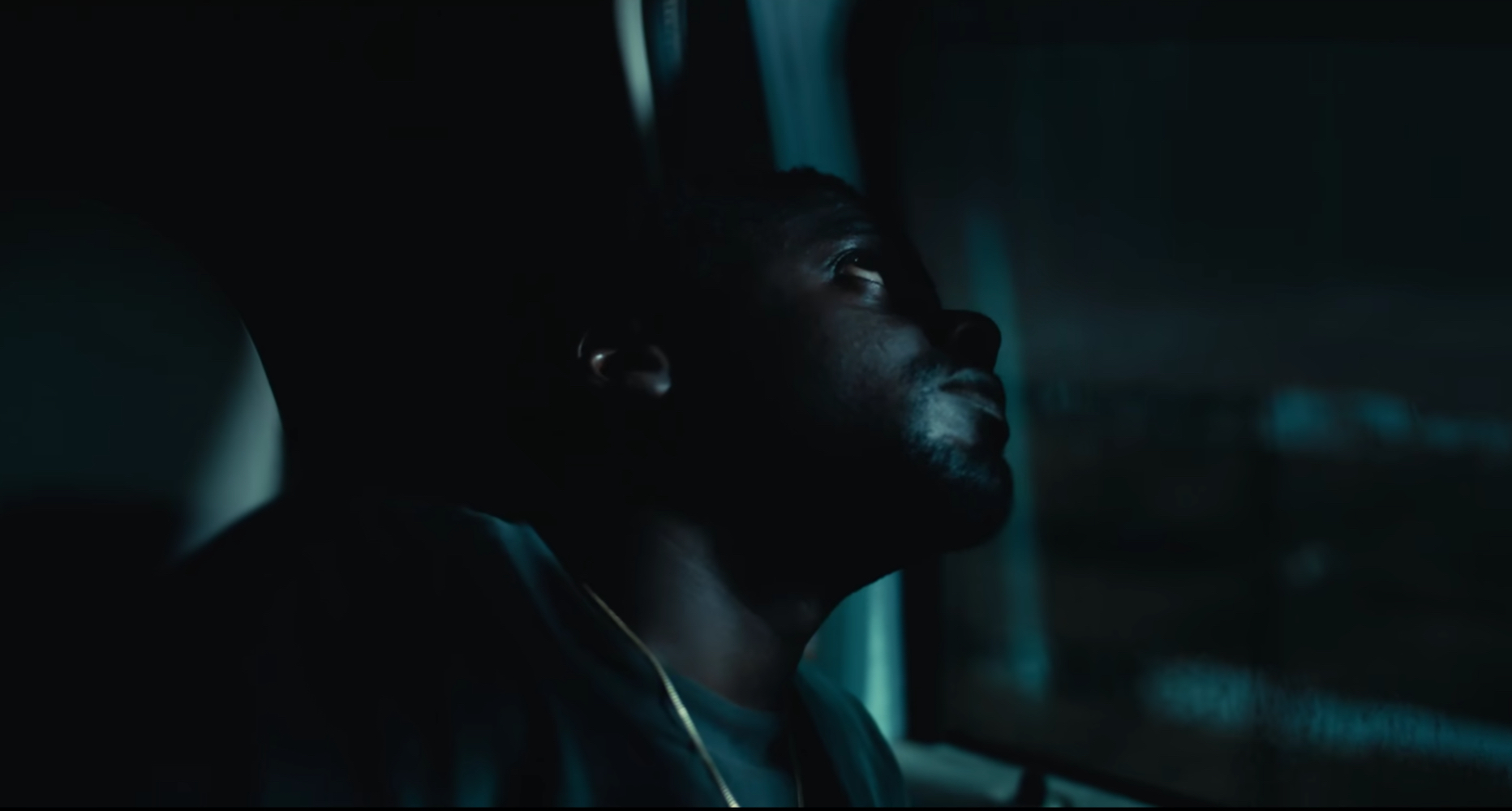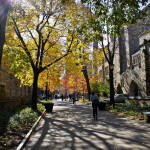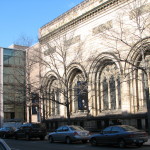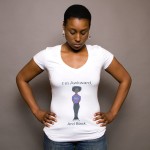By Nasser Eid ’25
Staff Writer
“It’s always night, otherwise we wouldn’t need light.”
Thelonious Monk
“If you are silent about your pain, they’ll kill you and say you enjoyed it.”
Zora Neale Hurston
I waited three weeks and a day to watch Jordan Peele’s Nope. It was the thriller of the summer, and I wanted to hold on to every moment I could of the season before it was over. I bathed in the heat of day, walking through
the streets of Harlem to the beat of my own footsteps. I often drowned in the waves of the dirt bikes that roared, the talking drums that bashed, and the laughter of children squirting water guns at each other. 135th Street hipped me to a world of orange top hats, brown hot dog buns, and yellow tape. The brownstone evoked the memory of those literary giants who birthed the New Negro Movement. Billie’s Place still raptures with sound thanks to a now boisterous saxophonist who tears its walls down every weekend.
But St. Nicholas Ave was being bought up by Hamden, and white liberals in their 30s seized the space. The experience overwhelmed me. Those street corner churches that carried the blaze of Adam Clayton Powell were now cardboard boxes plastering with purple paint. Ministers sold the lot, and thus the people it served, for a million dollar check, and ran off to North Carolina before anyone even realized what happened. The world they cut deals with was busy sending its billionaire tycoons to colonize Mars and pollute the air we breathe. But mothers still carried their daughters on their backs, who stared at me in disbelief. I still struggle to make sense of it all. I accept that we are forced by circumstance to this very moment. We have to find the strength from somewhere in us to keep pushing forward. I survived off of the coolness of the adhan at Masjid Al-Firdaus. The believers made the space a home by the way they smiled with all of their teeth showing. I was not ready to let go of this world.
But I eventually learned that it was not mine to keep. I remembered a headshot of Thomas Sankara posted on the door of a Burkina Faso clothing store. His eyes glowed against the backdrop of a jet-black Africa and lit those distant galaxies that the Hubble Telescope bore witness to. I was ready to walk along the catwalk of the AMC theater with my father and sister. Godspeed.
In the film, a black ranch hand named Otis Haywood Sr. trains and handles horses for television productions in California. The clouds disperse, and Haywood Sr. is killed by a nickel that goes through his eye when his horse jockeys and makes him plummet to the ground. His children Otis “OJ” Haywood Jr. and Emerald “Em” Haywood inherit the ranch. OJ is dedicated to the memory of his father, and keeps the coin that killed him above his bed set. His sister Em wants to get rich and famous by marketing the Haywood’s ancestral legacy of the jockey in “Plate 626” from Eadweard Muybridge’s Animal Locomotion series of photographs.
Jupe operates the nearby Jupiter’s Claim, a small Western theme park where he exploits his story of the Gordy’s Home massacre for profit. Jupe offers to buy the ranch from the Haywoods, an offer which Em encourages OJ to accept. Jupe falsely believes that he has the ability to engage with, and even master, nature because he survived the Gordy incident. Jupe and all of the attendees of the “Star Lasso Experience” are swallowed up by “Jean Jacket,” the creature that the Haywoods name after a horse from their childhoods. The Haywoods hire a director named Holst for assistance with capturing the “Oprah shot.” Holst initially refuses, but eventually agrees after hearing about the Jupiter’s Claim incident. Ultimately, Em snaps a photograph of Jean Jacket as it chokes to death on an inflatable.
Nope is a testimony to the three-dimensional nature of black life. As OJ rides into the night, the camera provides the audience an aerial view of his descent into the underworld. When he looks up at the sky, Jean Jacket perceives him as a threat. The glance questions the authority of the subject to rule, and thus to punish, the object. As OJ flees the vision of Jean Jacket, the horse that he rides on runs towards us. The tonality of the landscape wraps around our bodies. The ground shakes beneath our feet and we are forced to stabilize our footing so that we can bear the burden of blueness that the scene drags us into. We are saved when OJ makes it underneath the stables; its wooden structure blocks Jean Jacket’s vision.
Yet, the perception of the gaze never escapes OJ. When he tries to catch his breath, little kids dressed up as aliens scare him from behind and run away laughing. Despite the dare that OJ takes to glance upwards, he remains vulnerable to the environment he lives in. The children’s laughter is meant to humiliate OJ for claiming the right to freedom vis-à-vis travel. He is a black man in an intraterrestrial white world. Jean Jacket is supposed to create its own rules for who is allowed to live in its orbit. But the ranch as legal property belongs to the Haywoods. In a post-slavery society, the Haywoods, who the audience is left to assume are the descendants of enslaved Africans, use the image of the jockey in “Plate 626” to contextualize themselves in a history of liberation from slavery and exodus to the “Promised Land.”
Perhaps OJ completes the arc of justice at the conclusion of his final chase with Jean Jacket. OJ weaponizes the gaze to round up the creature in the position for the photograph. His neon orange hoodie is painted with two eyes so that he can focus on the geometry of the path he must take while simultaneously engaging with Jean Jacket. The epic climaxes when Jean Jacket is momentarily ensnared by the trip ropes that OJ maps earlier. The scene speaks to OJ’s expertise on making what I call “direct non eye contact.” It is a skill he develops out of survival. His father taught him to resist the inclination to stare in the eyes of the horse for too long so that the
animals would not lash out in intimidation. Similarly, OJ makes direct eye contact with Jean Jacket just long enough and in the right sequence of his planning so that he could trap the creature and not be killed by it.
At a deeper level, the commodification of nature is rooted in the belief of its intrinsic value to the consumer class. Previous footage of UFOs have leaked in the past, but they all feature gray masses that resemble clouds
more than any cartoon spaceship. Oprah Winfrey, who lives in the comedic imagination as the ultimate philanthropist of assets, complicates the question of who deserves to profit from the environment. The “Oprah shot” requires Jean Jacket to be exposed in all of its foliage. Only then could the Haywoods get the big payout that they have tried but failed to get from Hollywood. In contrast, Jupe, who has the same goal of profiting from the spectacle of Jean Jacket, is killed, probably because of the arrogance he had to conquer nature alone. Still, black capitalism is ushered through the lens of the well that Em uses to snap the photograph. As 50 said, “Get Rich or Die Tryin.’”
May we all take seriously the denoted message of the film: “I will pelt you with filth, I will treat you with contempt, and I will make you a spectacle.”



